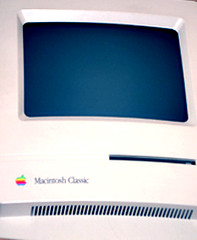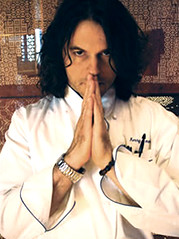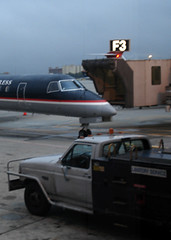"The District Court's ruling affirms our belief that a merger between Whole Foods and Wild Oats is a winning scenario for all stakeholders," said John Mackey, chairman, CEO, and co-founder of Whole Foods Market. "We believe the synergies gained from this combination will create long term value for customers, vendors, and shareholders as well as exciting opportunities for team members."
Yes, as predicted, U.S. District Judge Paul L. Friedman has declined to block Whole Foods Market Inc.'s $565 million purchase of Wild Oats Markets Inc. The judge ruled that it does not violate antitrust laws, leaving all speculation to whether or not the Securities and Exchange Commission will rule that Mackey's anonymous postings as the great masked “rahodeb” constitue a violation of securities laws or regulations.
While the reviews have been mixed, several media outlets gave Mackey a free pass despite some documents revealing that the deal could mean the closure of 30 or more Wild Oats stores as well as other details that seem contrary to the public image Mackey has portrayed over the years.
And therein lies the question. How far can Mackey go before he has completely eroded his concept of conscious capitalism? You see, before the controversy, Mackey was working on his book, The Whole Story, which he said would relate his business and life philosophies. And here is an excerpt from one essay that he requested comment on ...
In the early years of the 21st century, major ethical lapses on the part of big business came to light including scandals at Enron, Arthur Anderson, Tyco, the New York Stock Exchange, WorldCom, Mutual Funds, and AIG. These scandals have all contributed to a growing distrust of business and further eroded public trust in large corporations in the United States.
Mr. Mackey, as you so eloquently conclude in your essay ... When we are small children we are egocentric, concerned only about our own needs and desires. As we mature, we grow beyond this egocentrism and begin to care about others—our families, friends, communities, and countries ... I tend to agree. Yet, as much as these thoughts may have been welcomed, it will be exceedingly difficult to take them seriously as you add your own name to the list of scandals that have contributed to a growing distrust of businesses. And perhaps, therein lies the answer.
For while you have earned a pass from the media, forgiveness from the shareholders, beat the Federal Trade Commission, and may very likely survive the SEC investigation, it seems to me that you may have given up your opportunity to ascend to the rank of conscious business visionary. But hey, sometimes the price of winning costs as much, if not more than, losing. In this case, the price could very well be an entire legacy under the pressure of increasing scrutiny as the merger goes through. Indeed, brands are fragile things.

Yes, as predicted, U.S. District Judge Paul L. Friedman has declined to block Whole Foods Market Inc.'s $565 million purchase of Wild Oats Markets Inc. The judge ruled that it does not violate antitrust laws, leaving all speculation to whether or not the Securities and Exchange Commission will rule that Mackey's anonymous postings as the great masked “rahodeb” constitue a violation of securities laws or regulations.
While the reviews have been mixed, several media outlets gave Mackey a free pass despite some documents revealing that the deal could mean the closure of 30 or more Wild Oats stores as well as other details that seem contrary to the public image Mackey has portrayed over the years.
And therein lies the question. How far can Mackey go before he has completely eroded his concept of conscious capitalism? You see, before the controversy, Mackey was working on his book, The Whole Story, which he said would relate his business and life philosophies. And here is an excerpt from one essay that he requested comment on ...
In the early years of the 21st century, major ethical lapses on the part of big business came to light including scandals at Enron, Arthur Anderson, Tyco, the New York Stock Exchange, WorldCom, Mutual Funds, and AIG. These scandals have all contributed to a growing distrust of business and further eroded public trust in large corporations in the United States.
Mr. Mackey, as you so eloquently conclude in your essay ... When we are small children we are egocentric, concerned only about our own needs and desires. As we mature, we grow beyond this egocentrism and begin to care about others—our families, friends, communities, and countries ... I tend to agree. Yet, as much as these thoughts may have been welcomed, it will be exceedingly difficult to take them seriously as you add your own name to the list of scandals that have contributed to a growing distrust of businesses. And perhaps, therein lies the answer.
For while you have earned a pass from the media, forgiveness from the shareholders, beat the Federal Trade Commission, and may very likely survive the SEC investigation, it seems to me that you may have given up your opportunity to ascend to the rank of conscious business visionary. But hey, sometimes the price of winning costs as much, if not more than, losing. In this case, the price could very well be an entire legacy under the pressure of increasing scrutiny as the merger goes through. Indeed, brands are fragile things.





















